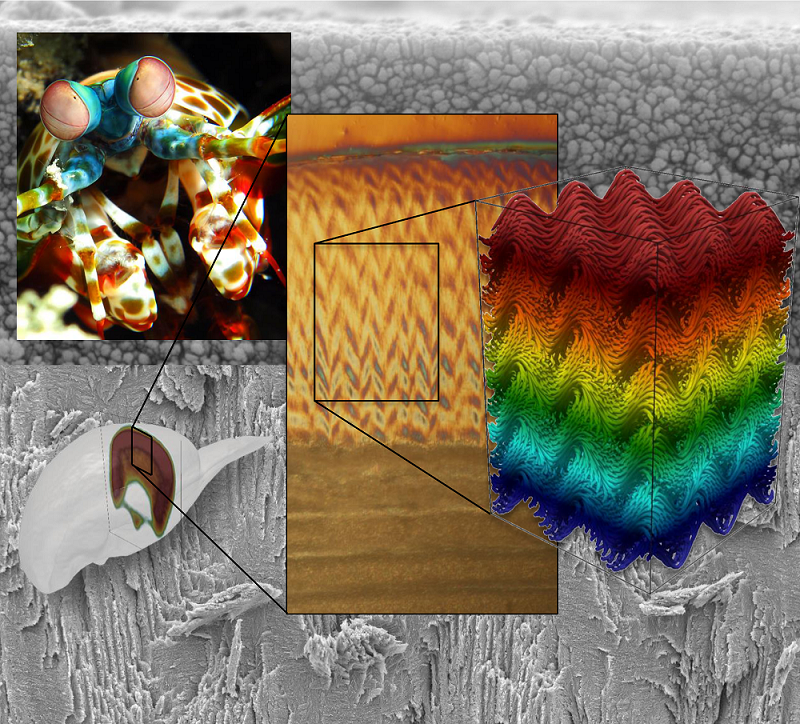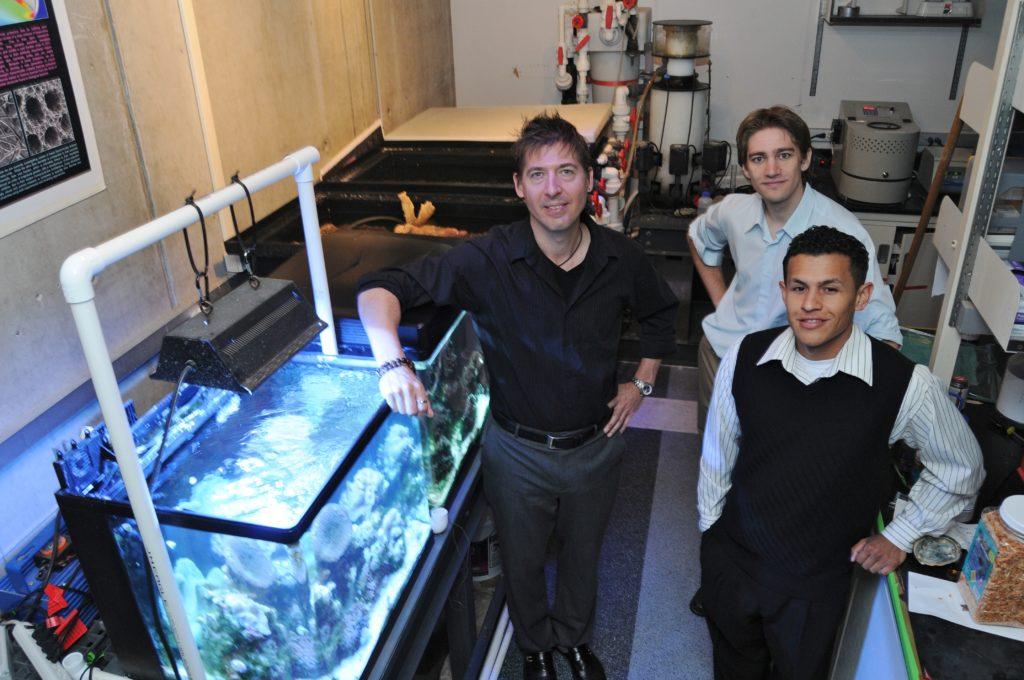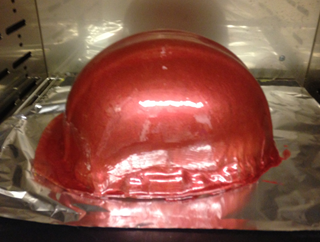Researchers Developing Super-Strong Materials Thanks to a 3D Printer and the Mantis Shrimp
 The rainbow-colored mantis shrimp is gorgeous to look at – to humans, anyway. To its fellow crustaceans, it’s a purple-eyed horror. The mantis shrimp is a brutal killer that dispatches its prey by beating it to death with a fist-like appendage that can hammer out blows at speeds of 10,000g – the velocity of a .22 caliber bullet. It may be a crab’s worst nightmare, but that appendage, called a dactyl club, is currently of great interest to researchers at Purdue University and the University of California, Riverside.
The rainbow-colored mantis shrimp is gorgeous to look at – to humans, anyway. To its fellow crustaceans, it’s a purple-eyed horror. The mantis shrimp is a brutal killer that dispatches its prey by beating it to death with a fist-like appendage that can hammer out blows at speeds of 10,000g – the velocity of a .22 caliber bullet. It may be a crab’s worst nightmare, but that appendage, called a dactyl club, is currently of great interest to researchers at Purdue University and the University of California, Riverside.
Mantis shrimp actually come in two varieties – spearers, which spear soft-bodied creatures as their prey, and smashers, which pulverize their shelled victims with the aforementioned club. The smashers are what interest the scientists, who believe that the dactyl club’s indestructible nature could lead to the development of new impact-resistant materials for things like helmets, armor and even airplanes and cars.
The research team, led by UCR professor David Kisailus, have been studying smashers and their fists of fury for the past eight years. A 2012 study, published in the journal Science, describes the dactyl club’s surprisingly complex structure, which consists of multiple regions. The energy-absorbent, shear wave-diffusing interior region, also known as the periodic region, is itself comprised of two “phases”: an inorganic phase made of amorphous calcium phosphate and calcium carbonate, and an organic phase comprised of chitin, a material found in the shells of crustaceans, twined together in a spiral staircase-like pattern.
Then there’s the impact region, which is the focus of a newly released paper published in Advanced Materials. The impact region is comprised of crystalline calcium phospate – also found in human bones – that surrounds the chitin fibers in a unique herringbone structure that not only protects the club but gives it more momentum on impact for maximum smashing. Surrounding the impact region is an additional thin layer that delocalizes the stress caused by repeated hammering. According to graduate student Nicholas Yaraghi, the club’s herringbone structure has never before been observed in nature, and it’s that structure that has the researchers excited.
According to graduate student Nicholas Yaraghi, the club’s herringbone structure has never before been observed in nature, and it’s that structure that has the researchers excited.
“We knew from previous studies that the impact region allows the mantis shrimp to transfer incredible momentum to its prey while resisting fracture, but it was exciting to reveal through our research that the properties of this highly impact-resistant material are created by the novel herringbone structure,” Yaraghi said.
Kisailus and his team enlisted the help of Pablo Zavattieri, Associate Professor of Civil Engineering and University Faculty Scholar at Purdue, and his research group, who built computational models of the herringbone structure. The models illustrated the structure’s ability to redistribute stress, but the real breakthrough came when the team 3D printed the models and subjected them to compression testing. The tests confirmed what the researchers had expected – the impact region’s structure is incredibly resistant to damage.
In yet another example of nature showing humans how to build things, the research team believes that they can use the structure of the dactyl club to create new ultra-strong materials.
“The smasher mantis shrimp has evolved this exceptionally strong and impact-resistant dactyl club for one primary purpose—to be able to eat. However, the more we learn about this tiny creature and it’s multi-layered structural designs, the more we realize how much it can help us as we design better planes, cars, sports equipment and armor,” Kisailus said. “By using 3D printing techniques like those used by Zavattieri’s team, we can actually take what we’ve learned about the architecture of the dactyl club and manufacture new composites with traditional engineering materials like polymers and carbon fiber.”
The team is already hard at work developing materials that utilize not only the impact-resistant herringbone structure but the protective outer coating of the dactyl claw as well. So far they’ve produced a prototype helmet, but that’s just the beginning. The study, which is being funded by the Air Force Office of Scientific Research, could eventually lead to, for example, armor that is super-strong yet a fraction of its current weight. Crustacean victims of the mantis shrimp, your deaths have not been in vain. Below, you can see a video of the mantis shrimp that lives in Kisailus’ lab. Aren’t these cool? Discuss further in the 3D Printed Mantis Shrimp forum over at 3DPB.com.
Subscribe to Our Email Newsletter
Stay up-to-date on all the latest news from the 3D printing industry and receive information and offers from third party vendors.
Print Services
You May Also Like
3D Printing Grows to $15.9B in 2024 Amid Shifting Industry Dynamics
The global additive manufacturing (AM) market reached $15.9 billion in calendar year 2024, according to “Q4 2024 3DP/AM Market Data and Forecast” from Additive Manufacturing Research (AM Research). Despite a...
Low-cost “Suzy” Polymer Powder 3D Printer is Faster and Cheaper than Past Models
Polish laser powder bed fusion (LPBF) firm Sinterit has released a follow-up to its predecessors, Lisa and Nils, called Suzy, a $19,490 printer equipped with a 30W fiber diode laser....
BellaSeno’s 3D Printed Breast Implants Keep Shape with 87% Fat Volume, Avoids Silicone Risks
At a medical conference in Austin this week, a new kind of breast implant took center stage. It is not made from silicone but from a 3D printed, fully resorbable...
Australia’s Untapped Potential as a Disruptive Innovator: SPEE3D CTO Steven Camilleri Explains Why He Wants to Make Stuff There
When I first met Steven Camilleri in 2023, the CTO of additive manufacturing (AM) OEM SPEE3D shared a quote with me from Clayton Christensen, the late Harvard professor who popularized...




























